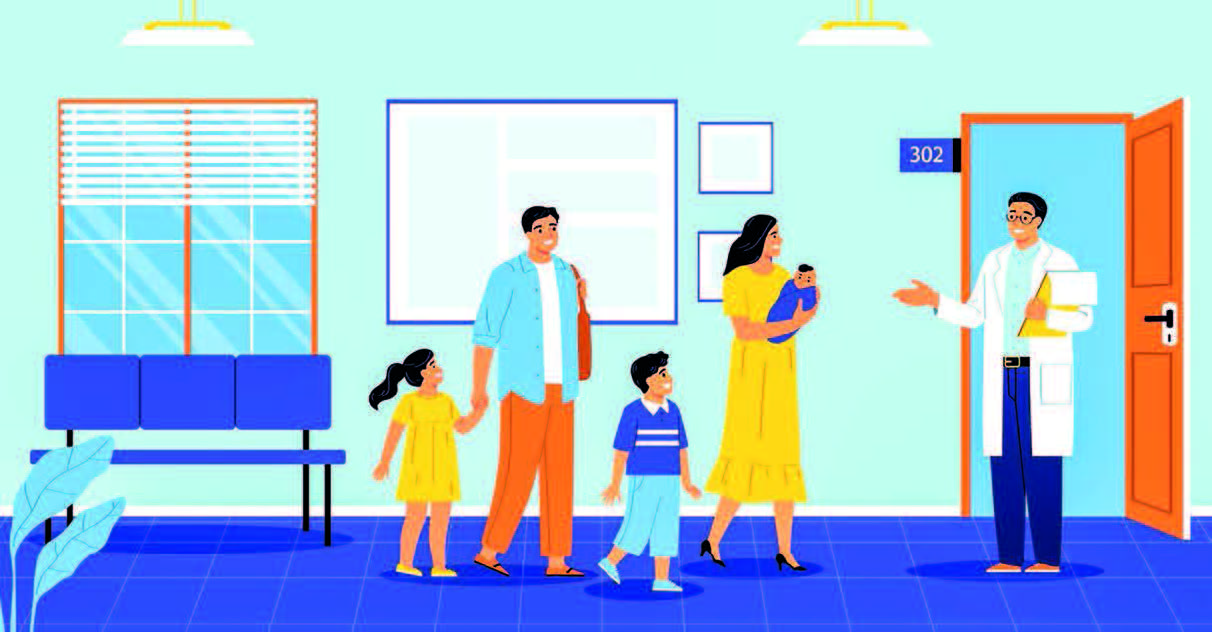By Dr Than Lwin Tun
THE Ministry of Health, Myanmar, laid down two objectives: to enable every citizen to attain full life expectancy and enjoy longevity of life and to ensure that every citizen is free from diseases.
The ways forward for the Department of Medical Services are retention of human capital in an all-inclusive approach, enhancing individual performance by time motion analysis, proper logistics and administrative support and enhancing the performance of the hospital by result-based management, patient safety and just-in-time response.
Teamwork and communication are essential for promoting teams that develop shared understanding, anticipate needs and problems, and apply standard tools for managing communication and conflict. In such doing, the following must be considered to improve safety in public hospitals: -
⁕ Enhanced Patient Safety: Effective communication and teamwork among healthcare providers reduce the potential for errors, which can significantly improve patient safety. When all team members are on the same page, the likelihood of mistakes decreases.
⁕ Improved Patient Outcomes: Collaborative efforts ensure that patients receive comprehensive care. That means better diagnosis, treatment plans, and follow-up care, leading to improved health outcomes.
⁕ Increased Patient Satisfaction: When healthcare providers communicate clearly and work together efficiently, patients and their families feel more involved and informed about their care. That leads to higher satisfaction levels.
⁕ Prevention of Medical Errors: Miscommunication is a common cause of medical errors. By fostering a culture of open communication and teamwork, hospitals can prevent many of these errors.
⁕ Efficient Care Delivery: Teamwork and effective communication streamline processes, making the delivery of care more efficient. That can lead to shorter hospital stays and better resource utilization.
⁕ Engagement of Patients and Families: Engaging patients and their families in the care process through clear communication helps them understand their treatment plans and what to expect. This involvement is linked to fewer adverse events and better overall care.
Simply treating colleagues and patients with respect – talking with them and listening to what they have to say with an open mind – is the first step towards effective communication and teamwork. Structured communication makes interactions with patients more effective and efficient, and it does the same thing for interactions among colleagues.
A critical communication tool that can help during briefings and debriefings is called “Situation-Background-Assessment-Recommendation” (SBAR). The SBAR technique provides a framework for communication between members of the healthcare team about a patient’s condition.
S = Situation (a concise statement of the problem)
B = Background (pertinent and brief information related to the situation)
A = Assessment (analysis and considerations of options – what you found/think)
R = Recommendation (action requested/recommended – what you want).
It allows for an easy and focused way to set expectations for what will be communicated and how between members of the team, which is essential for developing teamwork and fostering a culture of patient safety.
Effective teamwork and communication are critical parts of the design of safe systems. In addition, strong teamwork and communication skills with patients and their families, hospitals can enhance the quality of care, improve satisfaction, and ultimately boost overall performance.
References
⁕ https://www.aha.org/news/ blog/2017-03-15-focusing-teamwork-and-communication-improve-patient-safety
⁕ https://psnet.ahrq.gov/perspective/approach-improving-patient-safety-communication
⁕ https://link.springer.com/chapter/10.1007/978-3-030-94610-4_23
⁕ https://qualitysafety.bmj.com/ content/13/suppl_1/i85


